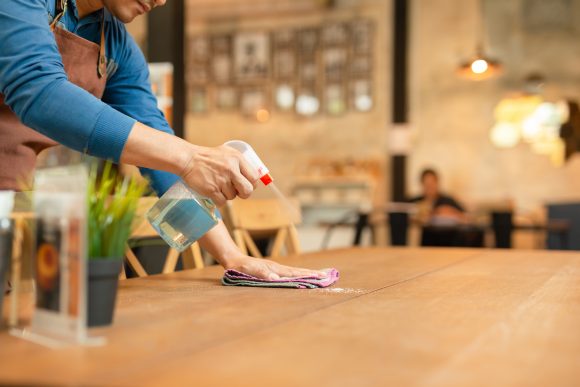
Not all cleaning is created equal. We’re going to break down the difference between sanitizing and disinfecting to give you some peace of mind about your operation.
Sanitizing vs. Disinfecting
The goal of both sanitizing and disinfecting is to decrease the amount of germ contamination present on a surface, but disinfecting, by definition, kills more germs than sanitizing. Product manufacturers and agencies like the Environmental Protection Agency use the word “sanitizing” to refer to a solution that reduces the number of germs on a surface by 99.9% or more, which is a level that’s considered safe by public health standards. The word “disinfecting” is used for chemical products that are engineered to kill virtually everything on a surface.
When should I sanitize?
Sanitizing is necessary for surfaces that come in contact with food, like plates, prep areas, and cooking surfaces. Essentially, sanitizing sprays will make those surfaces safe to touch again.
Sanitizing can also be done without chemicals, by an appliance like a dishwasher. Dishwashers bring contaminated surfaces into contact with extreme heat, at least 170F, to kill bacteria and other germs.
When should I disinfect?
If you need to remove every single bit of contamination from a space, you’ll need a good disinfectant spray to get the job done. A quality disinfectant should remove 100% of the microscopic organisms on your surfaces. These effectively stop the spread of diseases and viruses.
You may consider reaching for a disinfectant to treat high-touch areas like doorknobs, light switches, and bathroom faucets. To be effective, disinfecting solutions need to remain in contact with the surface for a specified length of time, refer to the manufacturer’s instructions.
You don’t want to skip the step of cleaning before you disinfect, though. Dirt and other organic material can make some disinfectants less efficient, so cleaning and wiping is necessary before disinfecting. Using antibacterial cleaners isn’t enough to disinfect unless you first remove visible dirt from the surface.









